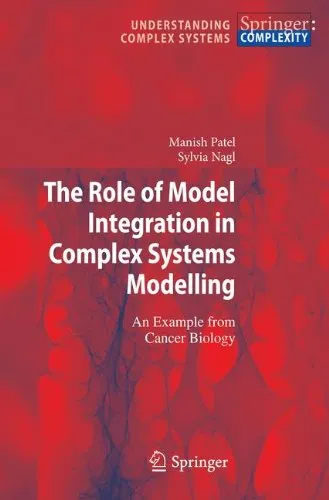The Role of Model Integration in Complex Systems Modelling: An Example from Cancer Biology
4.5
Reviews from our users

You Can Ask your questions from this book's AI after Login
Each download or ask from book AI costs 2 points. To earn more free points, please visit the Points Guide Page and complete some valuable actions.Related Refrences:
Model integration – the process by which different modelling efforts can be brought together to simulate the target system – is a core technology in the field of Systems Biology. In the work presented here model integration was addressed directly taking cancer systems as an example. An in-depth literature review was carried out to survey the model forms and types currently being utilised. This was used to formalise the main challenges that model integration poses, namely that of paradigm (the formalism on which a model is based), focus (the real-world system the model represents) and scale.A two-tier model integration strategy, including a knowledge-driven approach to address model semantics, was developed to tackle these challenges. In the first step a novel description of models at the level of behaviour, rather than the precise mathematical or computational basis of the model, is developed by distilling a set of abstract classes and properties. These can accurately describe model behaviour and hence describe focus in a way that can be integrated with behavioural descriptions of other models. In the second step this behaviour is decomposed into an agent-based system by translating the models into local interaction rules.The book provides a detailed and highly integrated presentation of the method, encompassing both its novel theoretical and practical aspects, which will enable the reader to practically apply it to their model integration needs in academic research and professional settings. The text is self-supporting. It also includes an in-depth current bibliography to relevant research papers and literature. The review of the current state of the art in tumour modelling provides added value.
Free Direct Download
You Can Download this book after Login
Accessing books through legal platforms and public libraries not only supports the rights of authors and publishers but also contributes to the sustainability of reading culture. Before downloading, please take a moment to consider these options.
Find this book on other platforms:
WorldCat helps you find books in libraries worldwide.
See ratings, reviews, and discussions on Goodreads.
Find and buy rare or used books on AbeBooks.
1133
بازدید4.5
امتیاز50
نظر98%
رضایتReviews:
4.5
Based on 0 users review
"کیفیت چاپ عالی بود، خیلی راضیام"
⭐⭐⭐⭐⭐



